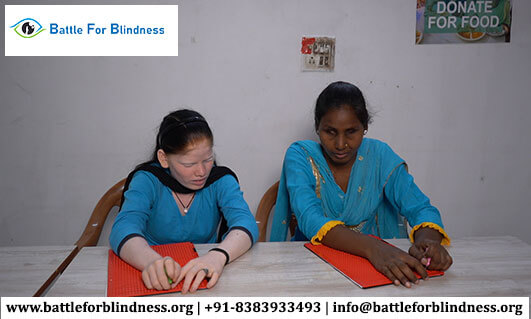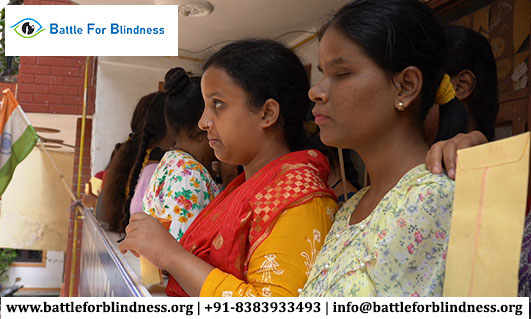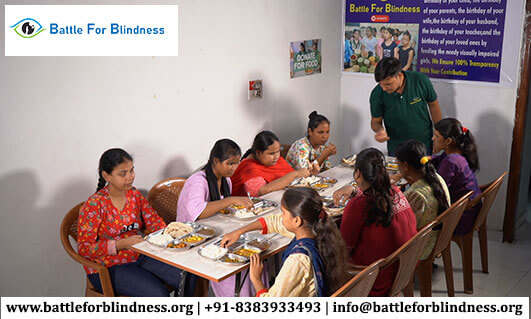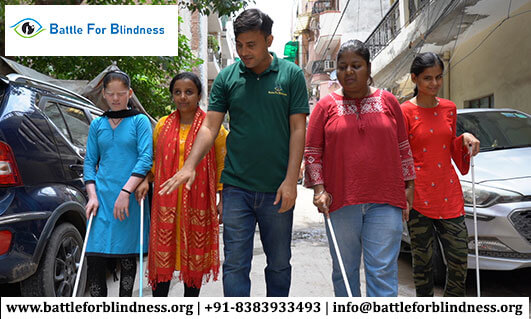
Blindness caused by various diseases is a major global health issue that affects millions of people, yet many forms of vision loss can be prevented or managed with the right interventions. Disease-related blindness often results from conditions like diabetes, glaucoma, cataracts, and age-related macular degeneration (AMD). By understanding the causes and taking steps to prevent and care for your eyes, you can reduce the risk of blindness and maintain good vision health.
Common Diseases That Cause Blindness
Several diseases are known to cause blindness. Here are some of the most common:
1. Diabetic Retinopathy
Diabetes is one of the leading causes of vision loss. Diabetic retinopathy occurs when high blood sugar levels damage the blood vessels in the retina, leading to swelling, leaking, and even bleeding. If left untreated, it can cause permanent vision loss.
- Symptoms: Early symptoms may be mild or nonexistent. As it progresses, symptoms include blurry vision, floaters, dark spots, or difficulty seeing at night.
- Prevention: Managing blood sugar levels, blood pressure, and cholesterol through a healthy diet and exercise is key. Regular eye exams can detect diabetic retinopathy early and allow for treatment to prevent further damage.
2. Glaucoma
Glaucoma refers to a group of eye conditions that damage the optic nerve, often due to high pressure inside the eye. It is known as the “silent thief of sight” because it develops gradually and may go unnoticed until irreversible damage has occurred.
- Symptoms: In its early stages, glaucoma may not present any symptoms. Over time, people may notice tunnel vision, loss of peripheral vision, or halos around lights.
- Prevention: Early detection through routine eye exams is critical, especially for those over 40, individuals with a family history of glaucoma, or people with conditions like diabetes. Treatments include eye drops, medications, laser treatments, or surgery to lower eye pressure.
3. Cataracts
Cataracts occur when the clear lens of the eye becomes cloudy, leading to blurry vision and, eventually, blindness if untreated. Cataracts are often related to aging but can also result from other conditions like diabetes, excessive sun exposure, or injury.
- Symptoms: Cloudy or blurry vision, trouble with night vision, fading colors, and sensitivity to light are common symptoms of cataracts.
- Prevention: Wearing sunglasses to protect against UV rays, managing chronic health conditions like diabetes, and avoiding smoking can reduce the risk of cataracts. Cataract surgery, where the cloudy lens is replaced with an artificial one, is a highly effective treatment.
4. Age-Related Macular Degeneration (AMD)
AMD affects the macula, the part of the retina responsible for sharp, central vision. It is a leading cause of vision loss in older adults. There are two types of AMD: dry and wet. Dry AMD is more common and develops slowly, while wet AMD is more severe and can cause rapid vision loss.
- Symptoms: Blurred or reduced central vision, dark spots, or distortion in the center of the visual field.
- Prevention: Maintaining a healthy lifestyle, including not smoking, eating a diet rich in leafy greens, fruits, and omega-3 fatty acids, and managing cardiovascular health can help prevent AMD. Regular eye exams are important for early detection, and treatments like medication or laser therapy can help slow its progression.
5. Retinitis Pigmentosa (RP)
RP is a rare genetic disorder that causes the retina’s cells to break down and lead to gradual vision loss, typically starting with night blindness and a reduction in peripheral vision.
- Symptoms: Difficulty seeing in low light, loss of peripheral vision, and eventually loss of central vision.
- Prevention: While RP cannot be prevented, maintaining overall eye health, monitoring vision changes, and seeking genetic counseling can provide useful information. Assistive technology and mobility training help individuals adapt to vision loss.
Prevention Strategies for Disease-Related Blindness
While some forms of blindness are irreversible, many can be prevented with proactive care. Here are key strategies to protect your vision:
1. Regular Eye Exams
One of the most effective ways to prevent blindness is to have regular comprehensive eye exams. Eye conditions like glaucoma and diabetic retinopathy can develop without noticeable symptoms, making early detection essential. Your doctor can monitor changes in your vision and suggest treatments that could prevent or delay blindness.
2. Manage Chronic Health Conditions
Diseases like diabetes and hypertension are major contributors to vision loss. Properly managing these conditions through medication, diet, and exercise can protect your eyes. Keeping blood sugar and blood pressure under control will minimize the risk of conditions like diabetic retinopathy and glaucoma.
3. Healthy Diet and Nutrition
A balanced diet rich in vitamins and minerals can promote eye health. Nutrients like vitamins A, C, E, zinc, and omega-3 fatty acids are particularly important for preventing AMD and cataracts. Incorporating leafy greens, fish, nuts, and fruits into your meals can provide essential nutrients that support eye function.
4. Protect Your Eyes
Exposure to UV rays from the sun can increase the risk of cataracts and other eye conditions. Always wear sunglasses that offer 100% UV protection when outdoors. In environments with flying debris or hazardous materials, wear protective eyewear to prevent injuries that could lead to vision loss.
5. Avoid Smoking
Smoking increases the risk of developing several eye diseases, including AMD and cataracts. It also contributes to poor blood circulation, which can affect the health of your optic nerve. Quitting smoking is one of the most significant steps you can take to protect your vision.
Caring for Vision Loss
When disease-related blindness occurs, it’s important to take steps to adapt and maintain quality of life. Here are some strategies for managing vision loss:
1. Low Vision Aids
If you experience partial vision loss, low vision aids such as magnifying glasses, large-print books, and electronic reading devices can help enhance your remaining vision. Screen readers and text-to-speech technology can also assist with daily tasks like reading and navigating digital devices.
2. Orientation and Mobility Training
For those with significant vision loss, orientation and mobility training can provide essential skills for independent living. Learning how to use a white cane, navigate public spaces, and safely move around your environment can greatly improve your confidence and independence.
3. Support Groups and Counseling
Dealing with vision loss can be emotionally challenging. Support groups and counseling can provide valuable resources and a sense of community for individuals facing similar challenges. Connecting with others who understand your experience can help you navigate the psychological impact of vision loss.
4. Accessible Living Spaces
Adapting your living space to accommodate vision loss can make daily life easier. Simple changes like improving lighting, using high-contrast colors, and removing tripping hazards can enhance safety. Voice-activated devices and smart home technology can also provide hands-free assistance with daily tasks.
Conclusion
Disease-related blindness can be devastating, but many forms of vision loss can be prevented with proper care and early detection. By managing chronic conditions, maintaining a healthy lifestyle, and seeking regular eye exams, individuals can protect their vision and reduce the risk of blindness. For those already experiencing vision loss, there are numerous tools and resources available to help adapt and maintain independence. Vision health is crucial to overall well-being, and taking proactive steps can make a significant difference in preserving your sight.





